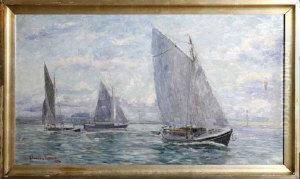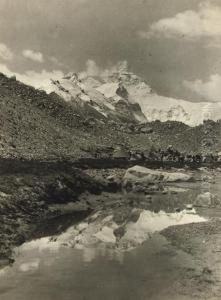Francis Sydney Smythe Paintings
Francis Sydney Smythe, also known as Frank Smythe or F. S. Smythe, was a British mountaineer, author, photographer, and botanist. While his contributions to art are not his primary claim to fame, his stunning photography and evocative writing have left a lasting impression on the world of art, capturing the beauty and majesty of the mountains he so loved.
Frank Smythe was born on July 6, 1900, in Maidstone, Kent, England. His passion for climbing began at an early age, and he quickly became one of the most prominent mountaineers of his time. His expeditions took him to various parts of the globe, including the Alps and the Himalayas, where he participated in the 1933 British Mount Everest expedition and, most famously, reached the then-record altitude of 28,126 feet without the use of supplemental oxygen in 1933.
Beyond his climbing feats, Smythe was an accomplished writer and photographer. He authored over a dozen books, including 'The Kangchenjunga Adventure', 'Camp Six', and 'An Alpine Journey', where he described his mountaineering experiences and the landscapes he encountered. His photographic work is particularly noteworthy for its early and innovative capture of high-altitude environments. The images he produced were among the first to bring the grandeur of the Himalayas to the general public. His photographs were not only documents of his climbs but also works of art that conveyed the awe-inspiring nature of the high mountains.
Smythe's interest in botany also led to significant contributions in that field. During his travels, he collected various plant specimens from the Himalayas, some of which were new to science. His botanical observations enriched the knowledge of alpine flora and added a scientific dimension to his expeditions.
Sadly, Frank Smythe's life was cut short when he died on June 27, 1949, at the age of 48. His legacy lives on through his written work, his photographs, and in the annals of mountaineering history. Smythe's contributions to the understanding and appreciation of the world's highest places have made him a respected figure not only among climbers and adventurers but also among those who value the intersection of art, nature, and exploration.

